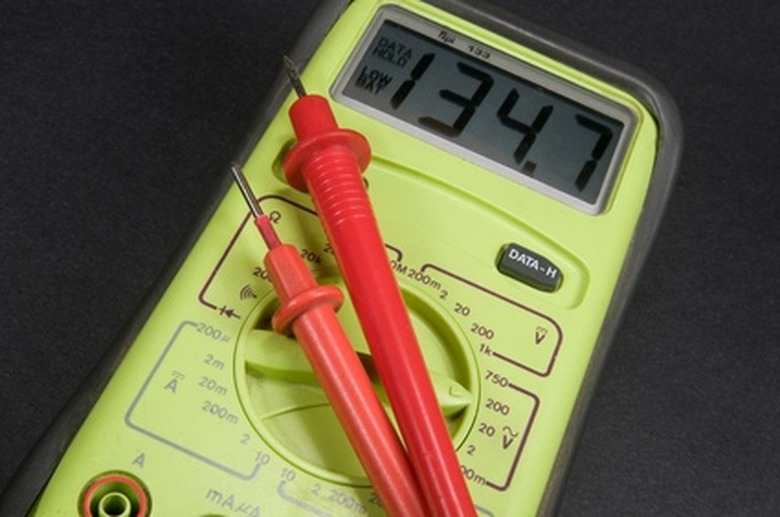How To Test Circuit Board Components
Tip
Use an identical circuit board that you know works to determine the right voltage levels. Compare the measurements on the working circuit board with the voltages on the circuit board you are testing. You will need a volt meter to measure the voltages in your circuit. A voltmeter has two probes, a positive probe and a negative probe. For making measurements, the negative probe must be connected to a ground point on the circuit board. The circut board's ground points can be found if you look at the circuit board's schematic (a drawing of the circuit board.) The ground symbol, a standardized symbol, is most often used to denote the ground points. The voltmeter's positive probe is used to measure the voltages on the components' pins. With the negative probe connected to ground, place the positive probe on the component pin you want to measure and read the result on the voltmeter's display. Consult the voltmeter's manual for specifics on using your voltmeter.
Warning
If you have not been trained in electronics safety procedures you run a high risk of electric shock or electrocution when working on circuit boards unsupervised. Circuit boards that have large components can be extremely dangerous.
A test of circuit-board components, such as capacitors, resistors, transistors and integrated circuits, can be done to some extent without removing the components from the circuit board. More comprehensive testing can be performed on these components when the component is removed. Most technicians, though, when attempting to diagnose if a circuit board component is faulty, use a volt meter to measure its input and output voltages.
Step 1
Disconnect the power from the printed circuit board and discharge all inductors and capacitors that may present a safety hazard. Confirm that the circuit board's wiring has been done correctly by examining the physical condition of each of the components on the board. Look for cracked, charred or loose components. Replace any damaged components and rewire any wiring mistakes.
Step 2
Connect and turn on the power to your circuit board again and measure the voltages on the inputs and outputs of each of the components on the board. Use your voltmeter (see Tips) to check the voltage level of all of components' input and output pins.
Step 3
Determine, for each voltage level checked, if the voltage level is the right voltage level. Rule out a component as a defective component if all the voltage level inputs and outputs are at the right voltage level.
Step 4
Turn off the power. Remove a component if all its input pins have the right voltage level but one or more of the output pins is at the wrong output voltage. Turn the power back on. Measure the voltage where the measured components pins once were. Replace a component if the voltage measurements are at the right voltage levels with the component removed.
Step 5
Measure the voltage levels of the output pins of the component (component B) that connects to the input pins of the first component (component A) checked. Do this if, and only if, component A's input pins have an incorrect voltage level. Find the wiring error if the output voltage measurements of component B's pins are not the same as the input voltage on component A's pins. .
Step 6
Repeat the procedure in Steps 3, 4 and 5 for each component and its preceding component until all of the faulty components and all of the faulty wiring have been located. Proceed in a systematic backwards fashion from the pin where the first incorrect voltage level is found, checking output pins first than input pins of each preceding component.
